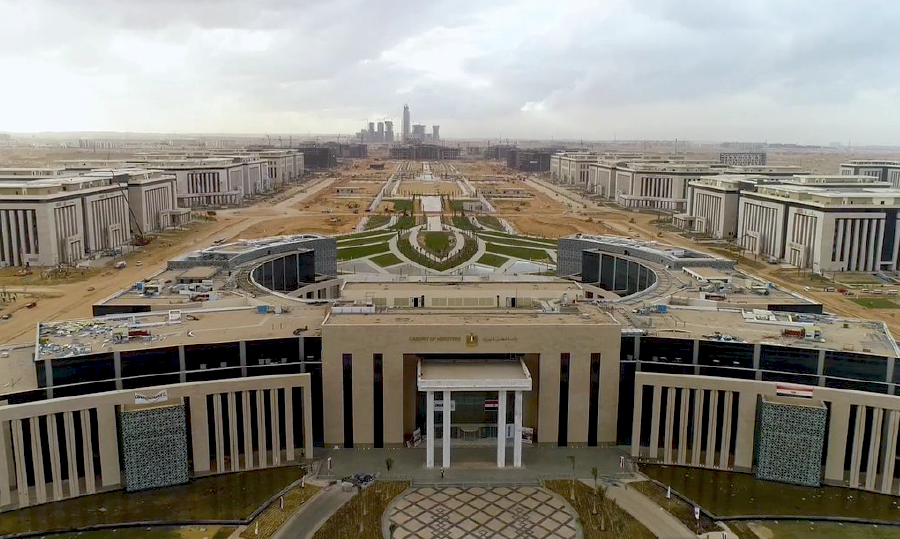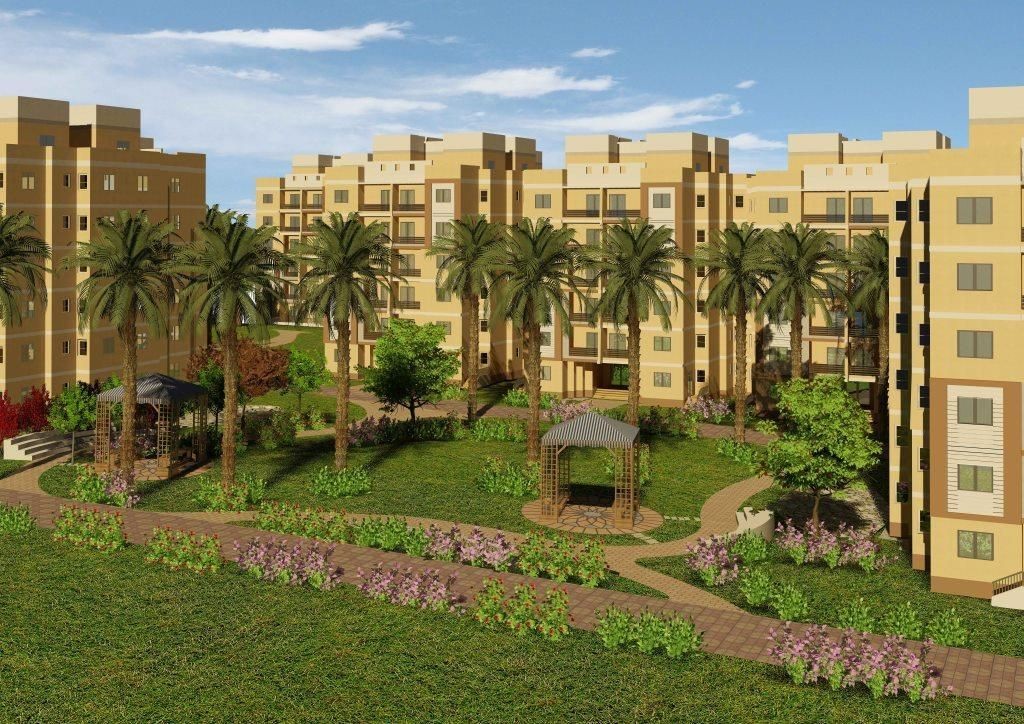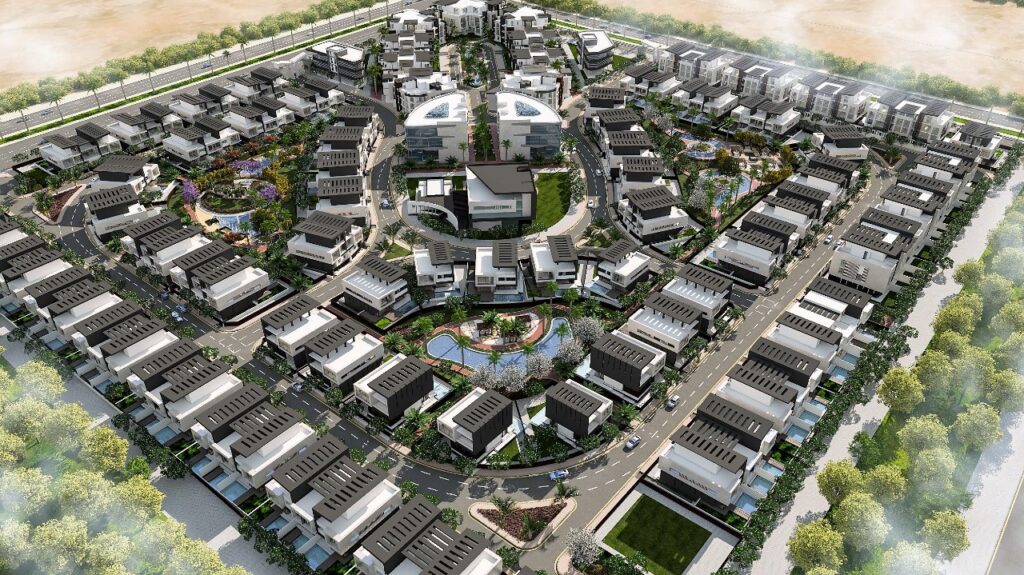Cairo, the capital of Egypt, is a bustling city with a rich history and culture. In recent years, the government has invested heavily in developing a new administrative capital about 30 miles east of Cairo. This new city is expected to be a hub for government offices, businesses, and residential areas.
The Cairo Capital Development project is a massive undertaking, with construction beginning in 2015 and ongoing plans for expansion. The new administrative capital is being built on a 270-square-mile area and is expected to accommodate millions of people. The government hopes this new city will help alleviate some of the congestion and overcrowding in Cairo, which has over 20 million people.
The development of the new administrative capital is not without controversy, however. Some have raised concerns about the cost of the project and the displacement of people living in the area before construction began. Nonetheless, the government remains committed to the project and continues investing in its development. As the new administrative capital takes shape, it will be interesting to see how it impacts the wider region and whether it lives up to its ambitious goals.
Historical Context
Evolution of Cairo as Egypt’s Capital
Cairo, the capital of Egypt, has a rich historical background that dates back to the 10th century. During this time, the Fatimids conquered Egypt and established Cairo as the ruling family’s seat and a center of power. The city was initially known as al-Mu’izziyya al-Qaahirah, which later developed into Cairo’s modern name.
Over the centuries, Cairo has evolved into a bustling metropolis with over 9 million people. However, with this growth came issues such as congestion and pollution. The government has been working on several initiatives to address these problems and improve the quality of life for its citizens.
Previous Capital Development Initiatives
The Egyptian government has launched various initiatives to develop Cairo as the capital. In 2015, the government announced the Cairo Capital Development Project, which aims to build a new administrative and financial capital city east of Cairo. The new city is expected to alleviate congestion in Cairo and provide its residents with a better quality of life.
The project includes constructing a new parliament building, government offices, residential areas, and recreational facilities. The new city will also have a modern transportation system, including a high-speed train connecting it to Cairo.
In addition to the Cairo Capital Development Project, the government has launched several other initiatives to improve Cairo’s infrastructure and services. These include the Cairo Metro, one of the most extensive metro systems in the world, and the Cairo Ring Road, which connects different parts of the city and reduces traffic congestion.
Overall, the Egyptian government has been working to address the challenges faced by Cairo as the country’s capital. With continued development, the city is expected to become a modern metropolis offering its residents a high quality of life.
New Administrative Capital Overview

Vision and Purpose
The New Administrative Capital (NAC) is a new urban community being developed in Cairo Governorate, Egypt. President Abdel Fattah El-Sisi announced the project in 2015 with the aim of creating a new capital city that will serve as a hub for government, business, and culture. The vision for the NAC is to create a modern, sustainable city that will meet the needs of Egypt’s growing population and economy.
Location and Size
The NAC is located approximately 45 kilometers east of Cairo in the desert area between the regional ring road, the Cairo-Suez road, and the Cairo-El Ain El Sokhna road. The city covers an area of 170,000 acres and is planned to be home to over 6.5 million people by 2050. The location was chosen due to its strategic position and proximity to major transportation routes.
Phases of Development
The development of the NAC is being carried out in several phases. The first phase, which began in 2015, includes constructing government buildings, residential areas, and infrastructure such as roads and utilities. The second phase, which is currently underway, includes the construction of business districts, cultural centers, and entertainment venues. The final phase will focus on completing the city’s infrastructure and developing its residential areas.
A government-owned company, the New Urban Communities Authority (NUCA), is developing the NAC in partnership with private developers. The project is being funded by the Egyptian government and the military. The aim is to create a new city that will help relieve congestion and pollution in Cairo.
In conclusion, the NAC is a significant development project that aims to create a new capital city for Egypt to meet the needs of its growing population and economy. The project is being carried out in several phases and is expected to be completed by 2050. With its strategic location, modern design, and sustainable development practices, the NAC has the potential to become a significant hub for business, culture, and government in the region.
Economic Implications
Investment and Funding
Cairo’s capital development project is a massive undertaking requiring significant investment and funding. The Egyptian government is expected to finance a large portion of the project, but foreign investment will also play a crucial role in its success. The government has appealed to international investors to participate in the project, and several countries have already expressed interest.
Impact on Egypt’s Economy
The development of Cairo’s new capital is expected to impact Egypt’s economy significantly. The project is expected to create jobs and stimulate economic growth in the country. The government hopes that the new capital will attract foreign investment and boost tourism, which will help diversify the economy and reduce its reliance on oil and gas exports.
Business and Commercial Opportunities
The development of Cairo’s new capital is expected to create numerous business and commercial opportunities. The project will require new infrastructure, including roads, bridges, and buildings, creating opportunities for construction companies and suppliers. The new capital is also expected to attract businesses and investors who want to capitalize on the city’s growth and development.
The International Monetary Fund (IMF) has praised Egypt’s efforts to reform its economy and attract foreign investment. The government has implemented several economic reforms to improve the country’s fiscal position, including reducing subsidies and introducing new taxes. The IMF has also provided Egypt with a $12 billion loan to support its economic reform program.
In conclusion, developing Cairo’s new capital is a massive undertaking requiring significant investment and funding. The project is expected to significantly impact Egypt’s economy, creating jobs and stimulating economic growth. The new capital is also expected to create numerous business and commercial opportunities, attracting businesses and investors who want to capitalize on the city’s growth and development.
Infrastructure and Urban Planning
Transportation Networks
Cairo Capital Development Egypt has significantly improved transportation networks in the new administrative capital. The development of a monorail and electric train system is underway to connect the new city to the existing Cairo metropolitan area. This will allow for efficient transportation of people and goods, reducing traffic congestion and improving air quality.
Green Spaces and Environmental Considerations
The development of the new administrative capital includes a focus on green spaces and environmental considerations. The Green River project, which spans over 35 kilometers, will provide a green corridor running through the city’s heart. This will provide a beautiful green space for residents and visitors, help mitigate the effects of urban heat islands, and improve air quality.
Utility and Technological Infrastructure
The new administrative capital will be a smart city with state-of-the-art infrastructure and technology. Honeywell has been contracted to provide building management systems that will ensure efficient use of energy and resources, reducing the city’s carbon footprint. The construction of modern housing and utility infrastructure will provide residents access to clean water, electricity, and other essential services.
In conclusion, Cairo Capital Development Egypt is focused on creating a sustainable and modern city that meets the needs of its residents while also considering environmental considerations. The development of transportation networks, green spaces, and utility infrastructure will provide a high quality of life for residents and visitors alike.
Architecture and Landmarks
Cairo has a rich architectural heritage, blending ancient and modern styles to create a unique urban landscape. The city is home to a number of iconic structures, including residential and commercial buildings, that are worth exploring.
Iconic Structures
One of Cairo’s most prominent landmarks is the Tallest Tower, which stands 345 meters tall. This enormous building, which dominates the cityscape, is a representation of Egyptian modern architecture. Visitors can enjoy spectacular city views from the observation deck at the top of the tower.
Another notable landmark is Central Park, a sprawling green space that provides a welcome respite from the city’s hustle and bustle. The park is home to several sculptures, fountains, and gardens, making it a popular destination for locals and tourists alike.
Residential and Commercial Buildings
Cairo is also home to several impressive residential and commercial buildings. The Central Business District is a hub of activity, with towering skyscrapers housing some of the city’s largest corporations. The district also has several luxury hotels, restaurants, and shopping centers.
Housing Units in Cairo are diverse, ranging from traditional apartments to modern high-rise buildings. Many of these units feature stunning city skyline views and are equipped with state-of-the-art amenities.
Religious landmarks are also an essential part of Cairo’s architectural heritage. The city is home to the Largest Cathedral, a stunning example of Gothic Revival architecture. The Grand Mosque, on the other hand, is a beautiful example of Islamic architecture and one of the world’s largest mosques.
Overall, Cairo’s architecture and landmarks offer a fascinating glimpse into the city’s rich history and culture. Whether exploring ancient monuments or modern skyscrapers, visitors will surely be impressed by the city’s unique urban landscape.
Social and Political Aspects
Population Relocation and Employment
The development of the new administrative capital in Cairo has brought about concerns regarding population relocation and employment. The relocation of the capital has led to the displacement of thousands of people, with many struggling to find new homes and jobs. The government has promised compensation and alternative housing, but some have criticized the process as inadequate.
Governmental and Administrative Shift
The development of the new capital has also resulted in a shift in governmental and administrative functions. Government ministries and civil servants are being relocated to the new capital, disrupting the government’s daily operations. The move has also created new jobs, with the government hiring thousands of employees to work in the new capital.
Public Perception and Criticism
The development of the new administrative capital has been met with mixed reactions from the public. While some see it as a positive step towards modernization and development, others have criticized it as a waste of resources and a means to consolidate power. There have also been protests against the displacement of people and the lack of transparency in the development process.
Overall, the development of the new administrative capital in Cairo has significant social and political implications. It has led to population relocation and employment concerns, a shift in governmental and administrative functions, and public perception and criticism. It is unclear how these problems will be resolved and how Egypt’s future will be affected by the new capital as development moves forward.
Strategic Significance
The Cairo Capital Development Egypt project is strategically significant to Egypt and the wider region. This section will examine the project’s impact on national security, military presence, and regional influence in the Middle East and North Africa.
National Security and Military Presence
The new administrative capital is strategically located in the desert, providing several advantages regarding national security and military presence. The project is designed to be a self-sufficient city with state-of-the-art infrastructure, including modern communication and transportation systems. The new capital will also house several government buildings, including the Presidential Palace and the Ministry of Defense, which will enhance the military’s presence in the area.
The military’s involvement in the project is significant, as it has been tasked with providing security for the new capital. The army is also involved in the construction process, which will provide employment opportunities for military personnel. The military’s involvement in the project is a testament to the government’s commitment to national security and stability.
Regional Influence in the Middle East and North Africa
The Cairo Capital Development Egypt project could enhance Egypt’s regional influence in the Middle East and North Africa. The project’s location in the region’s heart makes it an ideal hub for business and trade. The city’s state-of-the-art infrastructure and modern facilities will attract investors worldwide, boosting Egypt’s economy and enhancing its regional influence.
The project also has the potential to serve as an example for other countries in the region. Its success will demonstrate Egypt’s ability to undertake large-scale infrastructure projects and inspire other countries to follow suit. This will enhance Egypt’s regional influence and position it as a leader in the Middle East and North Africa.
In conclusion, the Cairo Capital Development Egypt project is strategically significant to Egypt and the wider region. The project’s impact on national security, military presence, and regional influence in the Middle East and North Africa cannot be overstated. The military’s involvement in the project and the city’s potential to serve as an example for other countries in the region make it a critical project for Egypt’s future.
Challenges and Controversies
Economic Challenges
One of the significant challenges facing Cairo’s new capital development is the economic downturn that Egypt has been experiencing in recent years. The government’s decision to cut subsidies has increased the cost of living, resulting in a decrease in consumption. This has affected the construction industry, significantly contributing to the country’s economy. As a result, the government has had to rely on foreign investment to fund the project, raising concerns about the country’s economic sovereignty.
Sustainability Concerns
Another issue raised is the sustainability of the project. The new capital is being built in the desert, which presents a number of challenges. An enormous amount of water will be needed for landscaping because water is a rare resource in Egypt. Additionally, the use of cement in construction has a significant impact on the environment. The government has stated that it will use sustainable materials to construct the new capital, but there are concerns about how this will be achieved.
Political and Social Issues
The construction of the new capital has also raised several political and social issues. The project has been criticized for symbolizing the government’s authoritarianism and diverting resources away from other parts of the country. There are concerns that the new capital will exacerbate the existing divide between the wealthy and the poor, as it is expected to be a hub for business and luxury living. Additionally, there are concerns about the displacement of people living in the area where the new capital is being built.
In summary, the Cairo Capital Development project faces several challenges and controversies. The economic downturn and subsidy cuts have impacted the construction industry, while sustainability concerns have been raised about using resources such as water and cement. The project has also been criticized for symbolizing the government’s authoritarianism and exacerbating the divide between the wealthy and the poor.
Future Prospects
Long-Term Vision for 2050
Cairo Capital Development Egypt has a long-term vision for the year 2050, including a comprehensive sustainable development plan. The plan aims to create a smart city that is technologically advanced, environmentally friendly, and socially inclusive. The vision is to create a city that is a model for the rest of the world.
The plan includes developing an Olympic City that will host major international sporting events. Additionally, the city will house an AI research center dedicated to creating state-of-the-art artificial intelligence technologies. The center will attract top researchers and scientists from around the world.
Potential Developments and Expansions
Cairo Capital Development Egypt has already completed Phase 1 of the project, which includes the construction of the new administrative capital. The city is designed to accommodate 6.5 million people and will be the largest urban park in the world.
The Detailed Master Plan for the city includes the development of a central business district, residential areas, cultural and recreational facilities, and transportation infrastructure. The plan also includes the development of a new airport and a high-speed train network that will connect the new capital with other major cities in Egypt.
There is potential for further expansion in the future, including the development of a new city in the desert. The new city will be modeled after Singapore and designed to accommodate 5 million people. It will be built using the latest sustainable technologies and will be a hub for innovation and entrepreneurship.
Overall, Cairo Capital Development Egypt is confident in its ability to create a world-class city that is sustainable, technologically advanced, and socially inclusive. The company is committed to realizing its vision and is working tirelessly to make it a reality.
Frequently Asked Questions
Who is the owner of Cairo Capital Development?
Cairo Capital Development is a subsidiary of the Abu Dhabi Capital Group, a leading international investment firm based in Abu Dhabi. The group has a diverse portfolio of investments across various sectors, including real estate, hospitality, and healthcare.
Where is the headquarters of Cairo Capital Development located?
The headquarters of Cairo Capital Development is located in the New Administrative Capital, a new city developed by the Egyptian government to relieve congestion in Cairo. The New Administrative Capital is situated about 30 miles east of downtown Cairo.
What job opportunities are available at Cairo Capital Development?
Cairo Capital Development offers job opportunities in various disciplines, including engineering, project management, finance, and marketing. Interested candidates can visit the company’s website to view job openings and submit applications.
What are some notable projects undertaken by Capital Developments Egypt?
Cairo Capital Development has undertaken several notable projects in Egypt, including the Lake West development, a mixed-use development in the New Administrative Capital. The Lake West development features residential, commercial, and retail components, a large central park, and an artificial lake.
Can you provide information on the Lake West development by Cairo Capital Development?
The Lake West development is a flagship project of Cairo Capital Development, located in the New Administrative Capital. The development spans over 1.5 million square meters and features numerous residential, commercial, and retail components. The development is centered around a large central park and an artificial lake, providing residents and visitors with a serene and picturesque environment.
How does Cairo Capital Development contribute to the real estate market in Egypt?
Cairo Capital Development is a key player in Egypt’s real estate market, providing innovative and sustainable solutions to accommodate the growing demand for high-quality residential, commercial, and retail spaces. The company’s projects are designed to enhance residents’ quality of life and contribute to Egypt’s economic growth and development.
EGYPT MLS
Egypt MLS, under Arab MLS, is a cutting-edge real estate platform for licensed professionals, realtors, and brokers in Egypt. It provides an extensive property database to simplify the search, comparison, and booking process for properties on the market, poised to revolutionize the real estate sector in Egypt.












